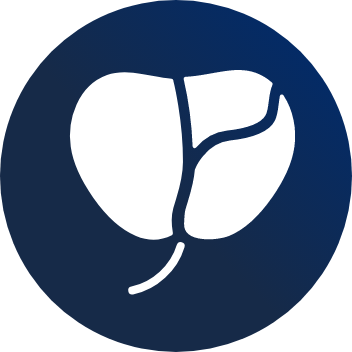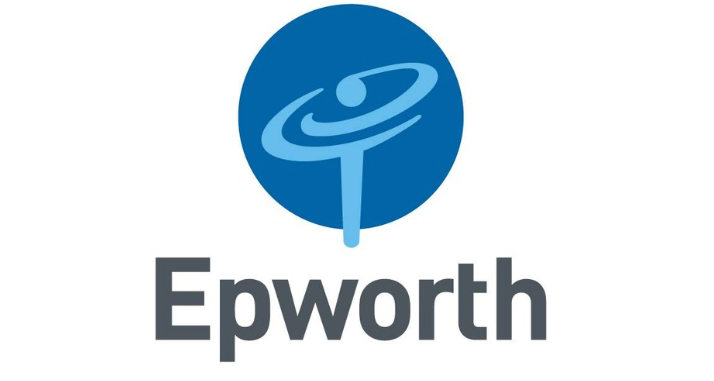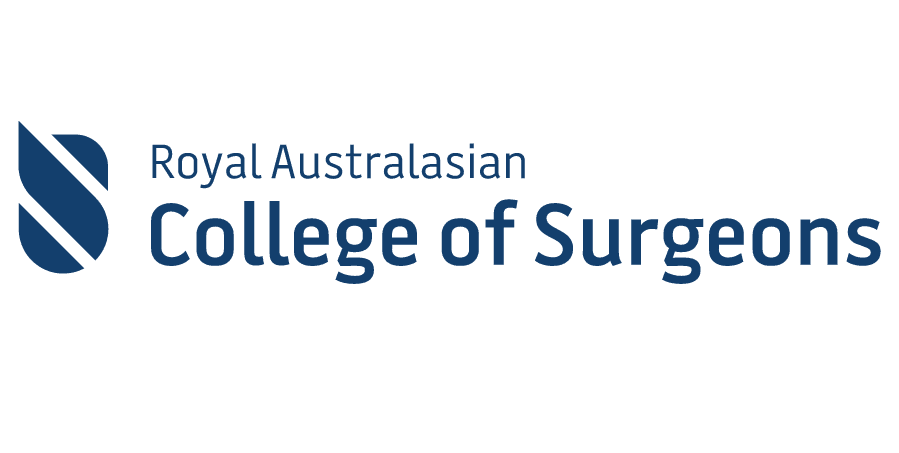Prostate Artery Embolisation
What is Prostate Artery Embolisation?
Prostate Artery Embolisation (PAE) is a minimally invasive procedure used to treat benign prostatic hyperplasia (BPH). It involves blocking the arteries that supply blood to the prostate gland, which can help reduce the size of the prostate and alleviate symptoms associated with BPH.
Who is Suitable for Prostate Artery Embolisation?
PAE may be considered for men who have been diagnosed with BPH and are experiencing bothersome symptoms that have not responded well to medication or other conservative treatments. However, not all men with BPH are suitable candidates for PAE, and it is still regarded as an experimental procedure. Here are some factors that may influence whether PAE is an appropriate treatment option:
- Size of the Prostate: PAE is typically most effective for men with moderately enlarged prostates (around 30-80 grams). Men with very large prostates may not be suitable candidates for PAE because the procedure may not effectively reduce the size of the gland enough to alleviate symptoms.
- Symptom Severity: PAE is generally recommended for men with moderate to severe symptoms of BPH, such as frequent urination, urinary urgency, weak urine flow, and difficulty emptying the bladder. Men with mild symptoms may not require invasive treatment and may be managed with medication or lifestyle modifications.
- Medical History: Before undergoing PAE, doctors thoroughly evaluate patients' medical histories and overall health to ensure they are suitable candidates for the procedure. This may include assessments of cardiovascular health, kidney function, and any other underlying medical conditions that could affect the safety and effectiveness of PAE.
- Patient Preference: Ultimately, the decision to undergo PAE or any other treatment for BPH should be made in consultation with a doctor, considering preferences, goals, and concerns. Some men may prefer the minimally invasive nature of PAE over traditional surgical options, while others may opt for alternative treatments based on their circumstances.
Benefits of Prostate Artery Embolisation
- Minimally Invasive
- Reduced Risk
- Quick Recovery
- Preservation of Sexual Function
- Effective Symptom Relief
- Minimal Need for Catheterisation
Types of Prostate Artery Embolisation
- Conventional PAE: In conventional PAE, tiny particles or coils are injected through a catheter into the arteries that supply blood to the prostate gland, blocking blood flow and shrinking the prostate tissue.
- Selective PAE: Selective PAE involves more precise targeting of specific arteries that supply blood to the prostate. This can help minimise damage to surrounding tissues and reduce the risk of complications.
- Bilateral vs. Unilateral PAE: Depending on the individual's anatomy and tolerance, PAE may be performed on both sides (bilateral) or only on one side (unilateral) of the prostate arteries in one sitting.
Alternative Options to Prostate Artery Embolisation
- Medications
- Transurethral Resection of the Prostate (TURP)
- Holmium Laser Enucleation of the Prostate (HoLEP)
- Bladder neck incision (BNI)
- Rezum
- UroLift
Preparation Before Prostate Artery Embolisation
- Consultation: Before undergoing PAE, you will consult with a doctor, typically a urologist or interventional radiologist, to discuss the procedure, its risks and benefits, and alternative treatment options.
- Medical Evaluation: You may undergo various medical tests and evaluations to assess your overall health and determine if you are a suitable candidate for PAE. This may include blood tests, imaging studies (ultrasound or MRI), and urological evaluations.
- Medication Review: Your doctor will review your current medications, including prescriptions, over-the-counter drugs, and supplements. Some medications may need to be adjusted or temporarily discontinued before the procedure.
- Preparation Instructions: You will receive specific instructions on preparing for the PAE procedure, including whether you need to fast before the procedure and any medications you need to take or avoid.
- Arrange Transportation:
Since PAE is typically performed on an outpatient basis, you will need to arrange transportation to and from the hospital or outpatient facility on the day of the procedure.
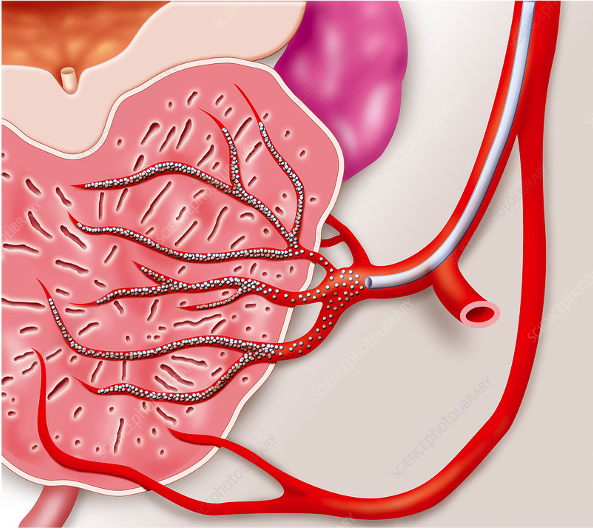
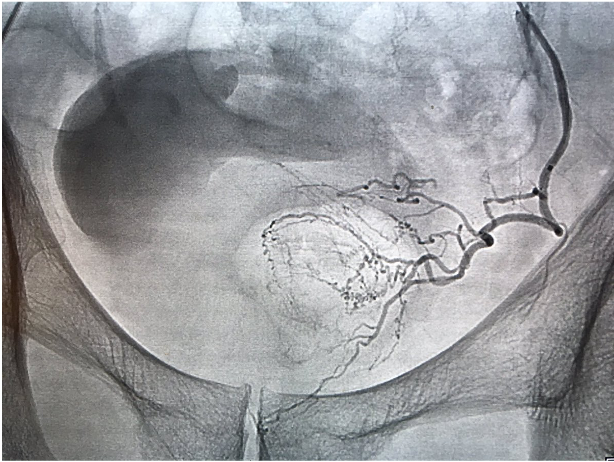
Prostate Artery Embolisation Procedure
- Anaesthesia: PAE is usually performed under local anaesthesia, meaning you will be awake during the procedure. However, the groin area where the catheter is inserted will be numbed to minimise discomfort.
- Catheter Insertion: A thin, flexible catheter is inserted into an artery in the groin and guided to the arteries that supply blood to the prostate gland using real-time imaging techniques such as fluoroscopy or angiography.
- Embolisation: Once the catheter is in position, tiny particles or coils are injected through the catheter into the prostate arteries to block blood flow to the prostate tissue. The specific embolic material used may vary depending on the individual case and the doctor's preferences.
- Monitoring: Throughout the procedure, your vital signs, such as heart rate, blood pressure, and oxygen levels, will be monitored closely to ensure your safety and comfort.
- Post-procedure Imaging: After the embolisation is complete, additional imaging studies may be performed to confirm that the prostate arteries have been successfully blocked and to evaluate the immediate results of the procedure.
Prostate Artery Embolisation Recovery Plan
- Observation Period: After the procedure, you will be monitored in a recovery area for some time to ensure no immediate complications and that you are stable before being discharged home.
- Pain Management: After PAE, you may experience discomfort or mild pain at the catheter insertion site or in the lower abdomen. Your doctor may prescribe pain medications or recommend over-the-counter pain relievers to manage discomfort.
- Activity Restrictions: You may be advised to avoid strenuous activities, heavy lifting, or vigorous exercise for a few days to allow time for recovery. Most patients can resume normal activities within a few days to a week after PAE, but following your doctor's instructions regarding activity restrictions is important.
- Follow-up Appointments: You will likely need to schedule follow-up appointments with your doctor to monitor your recovery progress, assess the effectiveness of the PAE procedure, and address any concerns or complications that may arise.
- Symptom Monitoring: The full effects of PAE may take some time to be realised, so it's important to monitor your symptoms closely in the weeks and months following the procedure. Be sure to report any persistent or worsening symptoms to your doctor.
- Lifestyle Modifications: Your doctor may recommend certain lifestyle modifications, such as dietary changes, fluid intake management, and bladder training exercises, to help manage symptoms of BPH and promote prostate health.
Prostate Artery Embolisation Prognosis
PAE has been demonstrated to effectively alleviate the symptoms associated with BPH, such as urinary frequency, urgency, weak urine flow, and incomplete bladder emptying. Many patients experience improved symptoms following the procedure, leading to enhanced quality of life and greater satisfaction with daily activities. Some patients experience sustained symptom relief for several years post-procedure.
Prostate Artery Embolisation Risks
- Infection: Steps to minimise this risk include administering antibiotics before and after the procedure and maintaining a strict sterile technique during catheter insertion.
- Bleeding: While PAE is designed to block blood flow to the prostate tissue, there is a risk of bleeding, particularly at the catheter insertion site in the groin. In most cases, any bleeding is minor and resolves independently, but in rare instances, it may require medical intervention.
- Allergic Reaction: Some patients may be allergic to the contrast dye or embolic material used during PAE. This risk is generally low, but it is important to inform your doctor of any known allergies before the procedure.
- Post-Embolisation Syndrome: Following PAE, some patients may experience a flu-like syndrome characterised by fever, chills, fatigue, and body aches. This is typically mild and self-limiting but may require symptomatic treatment with pain relievers and fluids.
- Rare Complications: In rare cases, more serious complications such as urinary incontinence, damage to surrounding organs or tissues, or allergic reactions to the embolic material may occur. These risks are minimised by careful patient selection, meticulous technique, and close monitoring during and after the procedure.
